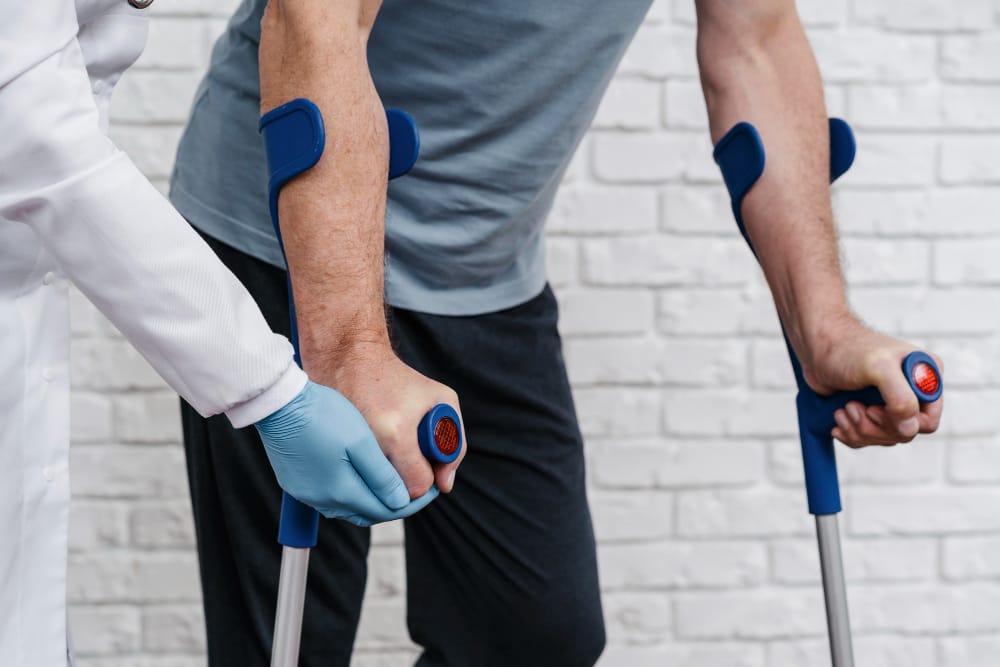What happens when you sit too long at work? The answer is a story of silent adversaries wreaking havoc on your health. As you immerse yourself in your tasks, the hours ticking away, your body endures a sedentary saga. “The Hidden Dangers of Prolonged Sitting at Work” is a narrative that goes beyond the surface, exploring the intricacies of a lifestyle that can quietly compromise your well-being. We will also highlight how you can start a personal injury claim.
The Sedentary Desk Odyssey
The day begins innocently enough. You settle into your chair, armed with a cup of coffee and a to-do list that seems endless. Little do you realise that, by immersing yourself in the tasks at hand, you’re inadvertently subjecting your body to an extended period of inactivity. The keyword, “The Hidden Dangers of Prolonged Sitting at Work,” casts a spotlight on the not-so-obvious perils that lurk beneath the surface of your seemingly harmless work routine.
As you sit for prolonged periods, your body undergoes a series of changes, setting the stage for potential health issues. Muscles, designed for movement, begin to protest silently as they remain unused. The intricate dance of joints and ligaments slows to a crawl, and blood circulation faces hurdles in reaching its optimum flow. It’s a tale of physiological stagnation, and the consequences are more significant than one might imagine.
The Domino Effect on Health
The side effects of sitting all day extend far beyond the immediate discomfort of a stiff neck or sore back. They delve into the realms of cardiovascular health, musculoskeletal well-being, and even mental acuity. Let’s dissect the cascade of consequences that follow the prolonged sitting saga.
Cardiovascular Conundrum
Your heart, the diligent organ that propels life-sustaining blood throughout your body, isn’t spared from the repercussions of prolonged sitting. As you stay seated, the risk of cardiovascular issues quietly creeps in. Studies from the UK have highlighted the connection between extended sitting hours and an increased likelihood of heart disease. The sedentary lifestyle fosters an environment where cholesterol levels may rise, and blood pressure can spike, laying the groundwork for potential heart-related complications.
Musculoskeletal Misery
The musculoskeletal system, consisting of bones, muscles, and joints, bears the brunt of prolonged sitting. Your spine, often at the mercy of poor ergonomics, may gradually adopt unnatural curves, leading to chronic pain and discomfort. This isn’t a mere inconvenience; it’s a precursor to more severe conditions like herniated discs or sciatica. The keyword isn’t just a catchphrase – it’s a beacon warning against the hidden dangers that manifest in the bones and muscles that support your daily grind.
Weighty Matters
Prolonged sitting, coupled with a lack of physical activity, contributes to weight gain and obesity. The body, designed for movement and energy expenditure, rebels against the sedentary norm. The metabolism, once a robust calorie-burning machine, slows down, making it easier for those extra pounds to find a permanent home. The dangers of a sedentary lifestyle extend beyond the visible changes in your physique; they infiltrate the very core of your metabolic well-being.
Receive a Call About Your Claim
The Cognitive Connection
While physical health takes centre stage, the hidden dangers of prolonged sitting also cast a shadow over cognitive function. Mental health is a delicate tapestry, intricately woven with threads of focus, creativity, and overall well-being. Prolonged sitting disrupts this delicate balance, potentially impacting your mental acuity and emotional resilience.
Cognitive Fog
Have you ever experienced a mid-afternoon slump where your concentration wanes, and the fog of fatigue descends upon your mind? Prolonged sitting may be a contributing factor. Reduced blood flow, particularly to the brain, can lead to lapses in cognitive function. Forgetfulness, difficulty concentrating, and a general feeling of mental haziness become unwelcome companions in your professional journey.
Emotional Rollercoaster
The connection between physical activity and mental health is undeniable. The sedentary lifestyle associated with prolonged sitting has been linked to an increased risk of anxiety and depression. The hidden dangers aren’t confined to physical ailments alone; they extend their reach into the realm of emotional well-being, creating a complex tapestry of challenges for the mind to navigate.
Making an Accident at Work with National Claims
In the realm of workplace hazards, the prolonged sitting narrative intertwines with the potential for accidents. As National Claims, we understand the intricate dance between occupational hazards and health. Prolonged sitting, while seemingly innocuous, can lead to unforeseen consequences. Our commitment is to shed light on the often-overlooked connection between workplace conditions and well-being, providing support and guidance for those who find themselves entangled in the aftermath of an accident. We are here to guide you through every step of the claims process.
Breaking the Chains: A Call to Action
As we unravel the intricacies of “The Hidden Dangers of Prolonged Sitting at Work,” it becomes evident that a paradigm shift is essential. The narrative isn’t about demonising desk jobs but rather about fostering a healthier balance between work and movement. Here are actionable steps to break free from the shackles of prolonged sitting.
Embrace Movement Breaks
Integrate short breaks into your work routine, during which you stretch, walk, or perform simple exercises. These breaks not only combat the physical toll of prolonged sitting but also invigorate your mind, promoting sustained focus and productivity.
Ergonomic Evolution
Invest in ergonomic furniture and accessories to create a workspace that supports your body’s natural alignment. Simple adjustments, such as proper chair height and monitor positioning, can go a long way in mitigating the hidden dangers associated with extended periods of sitting.
Stand and Deliver
Consider using a standing desk to reduce the total time spent sitting. Alternating between sitting and standing throughout the day can alleviate the strain on your muscles and joints, promoting a healthier balance between sedentary work and active movement.
Exercise as a Daily Ritual
Incorporate regular exercise into your daily routine. Whether it’s a brisk walk, a gym session, or a home workout, dedicating time to physical activity helps counteract the negative effects of prolonged sitting, fostering overall health and well-being.
Conclusion: Unveiling the Truth
“The Hidden Dangers of Prolonged Sitting at Work” is more than a keyword; it’s a wake-up call to reassess our sedentary norms. As we navigate the intricacies of our professional lives, let’s not forget the symbiotic relationship between movement and well-being. By understanding and addressing the hidden dangers, we can pave the way for a healthier, more balanced work life. It’s time to stand up, quite literally, against the perils of prolonged sitting and embark on a journey towards a more dynamic and vibrant approach to work and life.
Contact us today to speak to one of our claims agents who will be able to help you get started on your claim.
Click below to see why we are one of the most trusted claims management companies in the UK.

We’re proud of our excellent customer reviews
We thrive on delivering exceptional service and ensuring our clients’ satisfaction. Don’t just take our word for it. Check out some of our independent reviews to see what our clients have to say.
Excellent

This firm is excellent, they sorted out my car pay out and injury claim very fast, they always communicate with you all the time.

My accident case was dealt with confidence and with great result of the outcome, especially James kept me informed all the time.

I was very impressed at the way my inquiry was treated. I was listened to attentively and everything I needed to know was explained to me.






